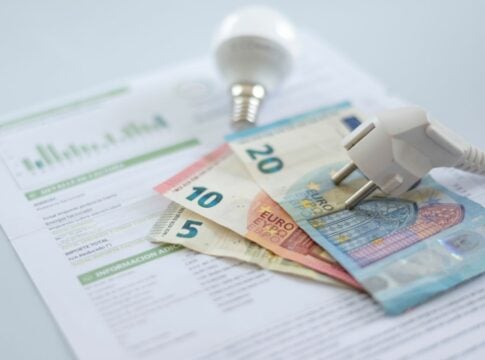China’s shipyards are focusing on the optimal design that will allow lower consumption and, by extension, the installation of energy-saving devices, while developing the next generation ships.
At the same time, designs for ships using alternative fuels such as LNG, methanol and ammonia are progressing, having already begun the shipbuilding process on behalf of shipowners who have taken steps in this direction.
The major Chinese state shipbuilding group China State Shipbuilding Corporation Limited (CSSC Group) held a special event during the Posidonia maritime exhibition – attended by “Naftemporiki” – giving a glimpse of the ships in the next 20-25 years.
The group has created two Research and Development (R&D) companies, the Marine Design & Research Institute of China (MARIC) and the Shanghai Merchant Ship Design & Research Institute (SDARI), and the new ship designs they have drawn up were presented at the event.
Focus on the design
“The design of the ship can play a decisive role in the decarbonization process,” it was pointed out, among other things.
Optimization of the engine, structure, loading system, propeller, hull, application of low friction paint are all part of an integrated design for low emission ships.
At the same time, energy-saving devices enter the market, such as the advanced solutions of sails, air lubrication systems, carbon capture systems, and also alternative fuels.
The “green” path
The Chinese shipbuilding group estimates that the path to decarbonization passes through five “roads”. The first is logistics and digitization. This includes speed reduction, ship utilization, ship size and alternative routes it can take.
It is believed that a proper management of the above factors can reduce energy consumption by up to 20%.
The second is hydrodynamics. Hydrodynamic measures are hull coating, hull optimization, air lubrication systems and can lead to a 5-15% reduction in consumption.
A third factor is engineering. In other words, engine improvement, waste heat recovery, and hybridization using batteries. CSSC estimates that these upgrades reduce energy consumption by 5%-20%.
The fourth “road” is fuels and energy with a low to zero carbon footprint, and as the fifth, it mentions carbon capture and storage systems under the title “after treatment measure.”
The fuel “map”
The evaluation of alternative fuels and technologies for reducing the environmental footprint of ships attracted the interest of the participants. The analysis examined LNG, methanol, ammonia, hydrogen, biofuels, batteries and carbon capture and storage systems (CCUS).
According to the CSSC, the main disadvantage of LNG and methanol is the limited reduction of the carbon footprint, ammonia’s the low energy density, hydrogen’s the rather low temperature, biofuels’ the limited sources of supply, batteries’ the limited power output and CCUS’ the high power consumption.
At the level of the regulatory framework, the conditions are mature for LNG, methanol, biofuels, batteries and CCUS, while for the rest of the technologies relevant regulations have not yet come into force.
As for compatibility with ships, LNG, methanol, ammonia, hydrogen and CCUS will be used by medium and large-sized ships, while batteries in short-haul ships.














